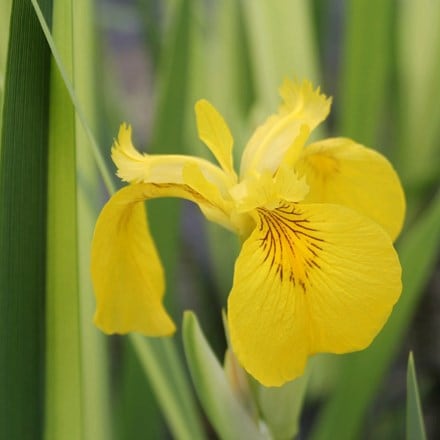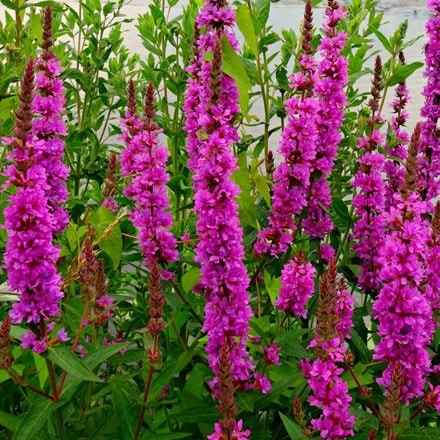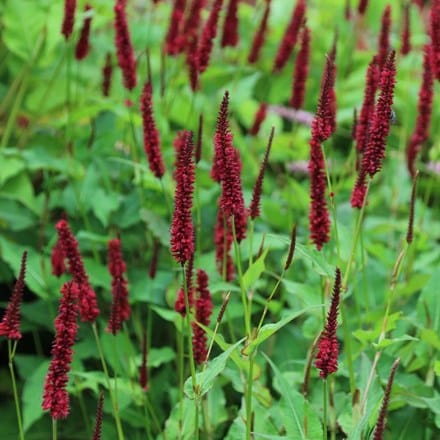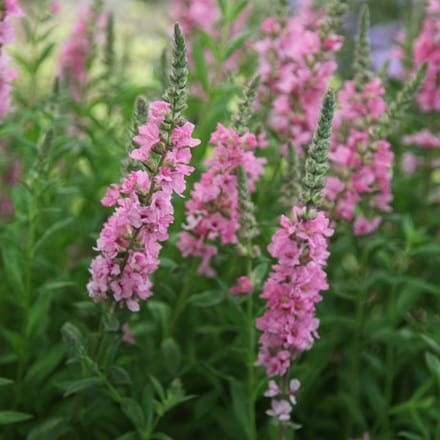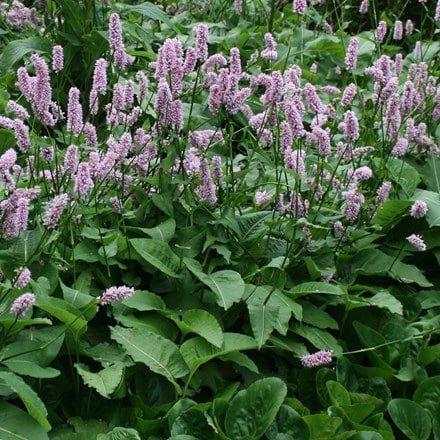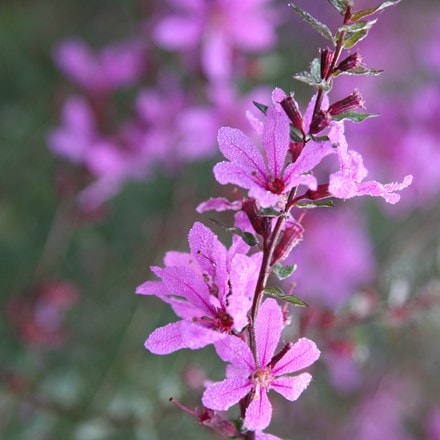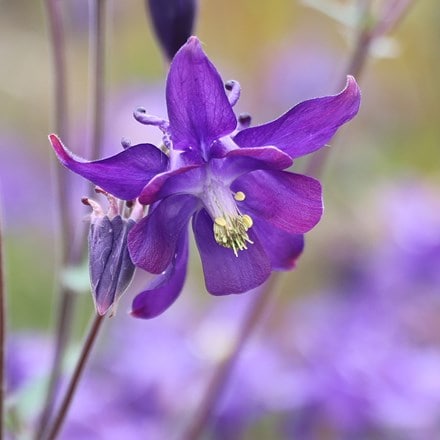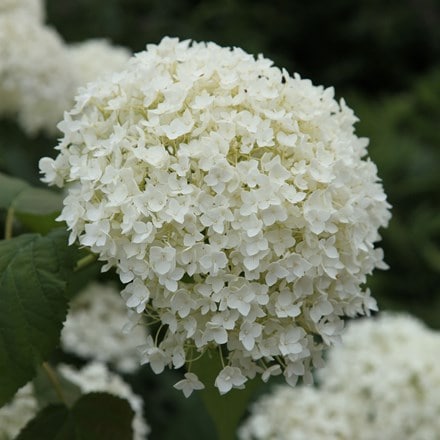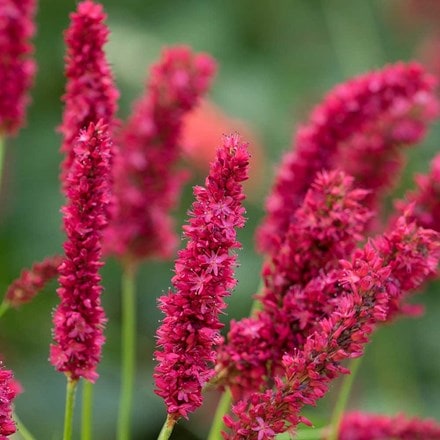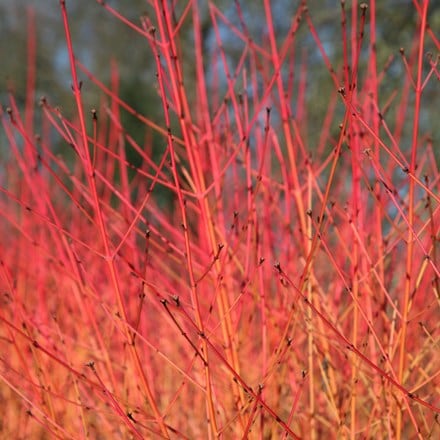
Written by: Ashley Edwards
By now the garden should be looking rather smart, but if there are gaps in borders, or if the patio still needs a bit more colour, then do a quick top up before sitting back and enjoying it all while the weather is good. Many of you wont be able to sit still for long though as there are always lots of little jobs that will niggle unless they're tackled. Things like deadheading flowers that are past their best, tying in wayward climbers, pulling out the occasional weed and some general primping and preening won't take long, and they can all be tackled with a cool drink in easy reach. The plants will need plenty of these too, so make sure you keep up on the watering and they don't go thirsty.
Crocus Head Gardener Ashley Edwards tells us what else we can be doing in the garden this month
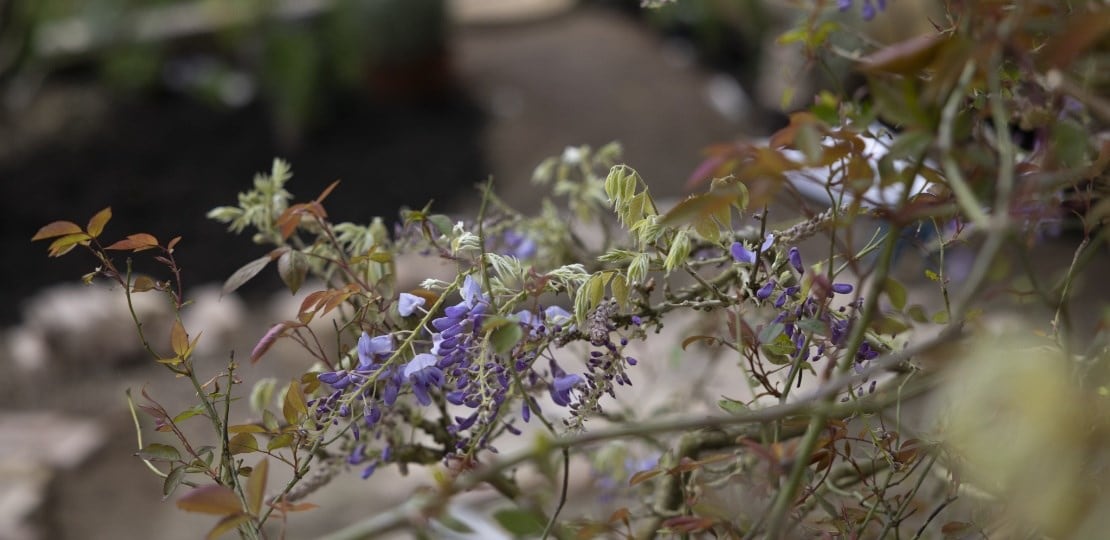
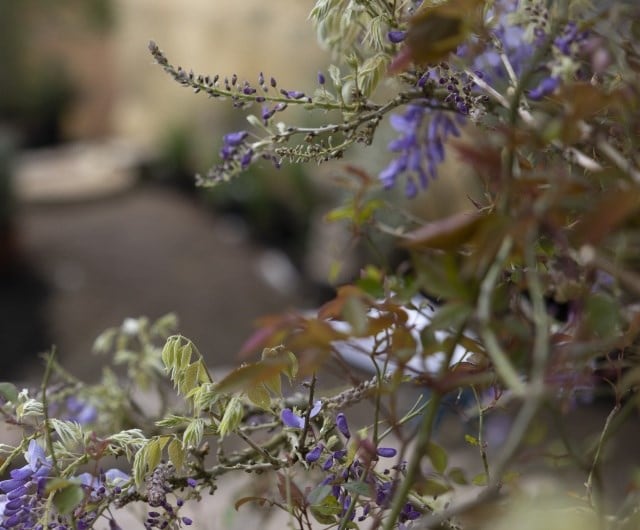
Pruning Established Wisteria
Wisteria is one of the most spectacular plants you can grow in the garden. The pendant, fragrant blooms provide a stunning centre piece and look fabulous trained against the front of your house or on an archway. If you don’t have the space for a full size wisteria, there are standard-trained varieties that have a single trunk and tree-like canopy, which are fantastic in containers. Wisteria prefers full sun on a warm protected wall. They grow in various soil conditions, but hate being waterlogged, they also do best in a slightly acidic to neutral soil pH. Wisteria require regular pruning to keep them in shape and flowering at their best.
Winter is the time to carry out structural pruning, but by summertime, your wisteria will have put on lots of new growth and may be threatening to swamp your whole garden. Now is a great time to prune to keep it in shape, whilst also encouraging the plant to focus on creating flower buds for next year's display.
Pruning in summer also allows light and air into the plant which helps to keep pests and disease at bay. Always use a pair of clean, sharp secateurs and you may also need long armed pruners or a ladder if your wisteria is trained up a tall trellis.
Cut back the new whippy shoots to 6-7 pairs of leaves and to an outward facing bud where possible. If there are any shoots coming from the base of the plant, you can take these back to the stem. You can spend some time cutting out any dead branches that may have snapped in the wind or shoots that look diseased. Tie in any wayward shoots, these will thicken up the appearance of the plant and produce flowers next year.
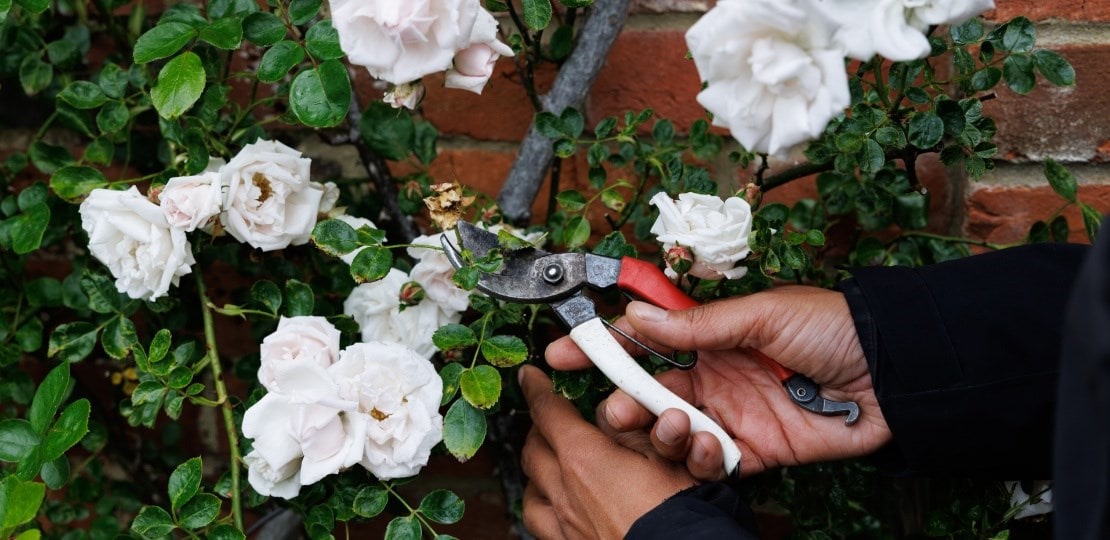
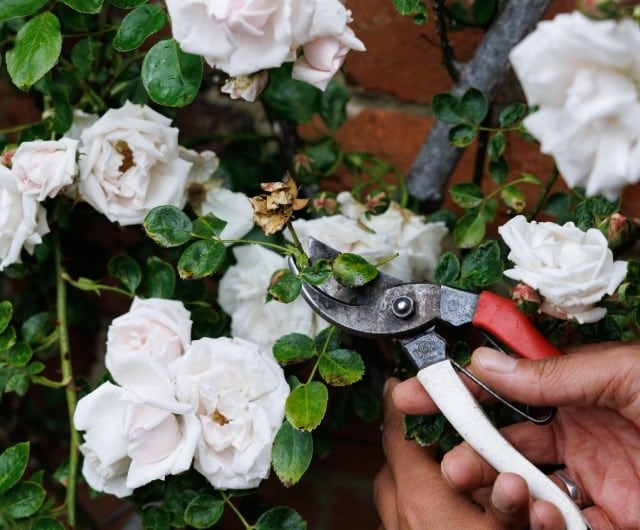
Deadheading
The ultimate purpose of a flower is to attract pollinators which transfer pollen, fertilising the flower. Once pollinated and fertilised, a flower loses its petals, and the ovule swells and produces seeds (or fruit in many cases). By dead heading, we interrupt this process and so the plant produces more flowers in an attempt to be fertilised again.
Deadheading extends the flowering period of your plant and encourages more blooms. Pelargoniums, petunias, gazania, calendula, sweet peas, cosmos and many other annuals require regular deadheading to keep them looking their best. Deadheading can also be beneficial for perennials too. Perennial salvias will repeat flower if the spent flowers are trimmed off. Dahlias respond extremely well and will continue to produce blooms right up to the frost if you keep on top of deadheading.
Some plants like nigella, poppies, alliums, dog roses, ornamental carrot and many more have ornamental seed heads so avoid deadheading after their flowering season, leaving seed heads to provide winter interest.
When deadheading, take the flowering stem back to the next set of healthy leaves. You can often use your thumb and fingers to pinch off the old blooms, a sharp pair of snips will work equally well. If you have a large bushy plant, like lavender, and the flowers have largely gone over, you can use a pair of shears to give an overall deadhead.
With continuous deadheading you’ll have a beautiful display through the summer season.
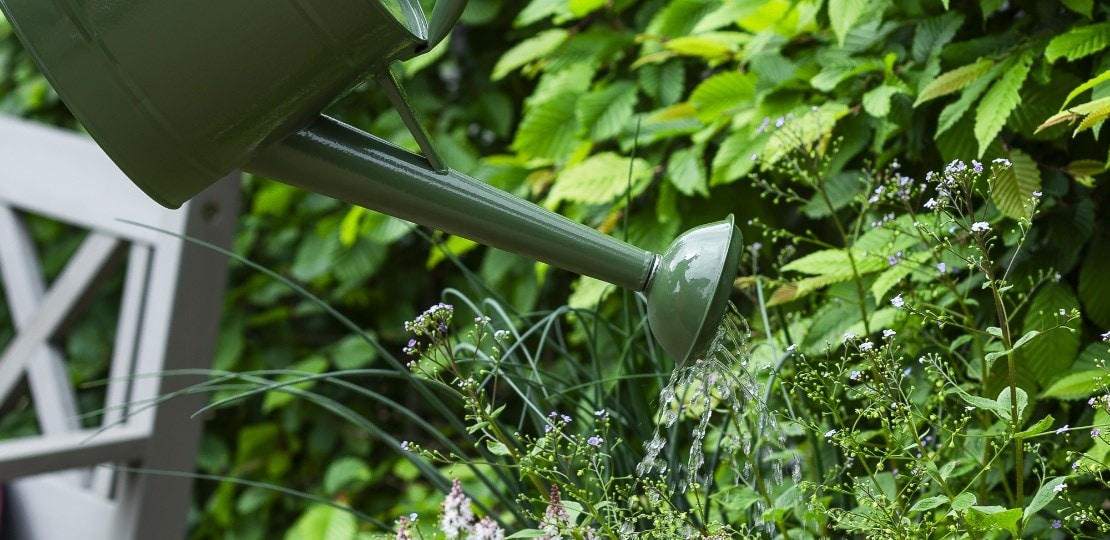
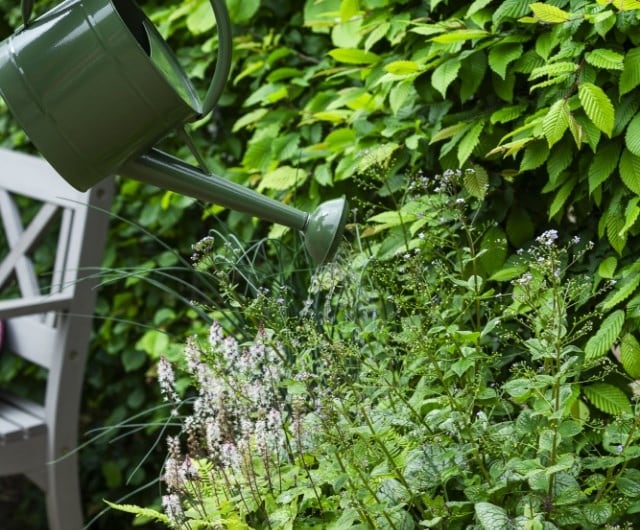
Feeding Containers
To produce flowers all summer long, plants need to expend lots of energy. The compost you plant into will usually feed your plant for around 6 weeks, after this you’ll need to start a feeding regime every 2 weeks. Choose an organic liquid feed, I find liquid seaweed is great at strengthening and encouraging flowers. You can also create your own liquid feeds from wormery liquid or comfrey. These are a bit trickier to measure than store bought fertilisers, but a free resource and have less impact on the environment. Less is more when it comes to feeding, and you can kill plants with too much fertiliser.
In addition, containers planted with shrubs or trees will benefit from the top layer of soil being replenished with a peat free compost. Mulching with bark chips also helps to maintain moisture, keeps weeds suppressed and breaks down slowly, feeding your plant. Always make sure to keep woody plant stems free of mulch/compost to prevent rotting.
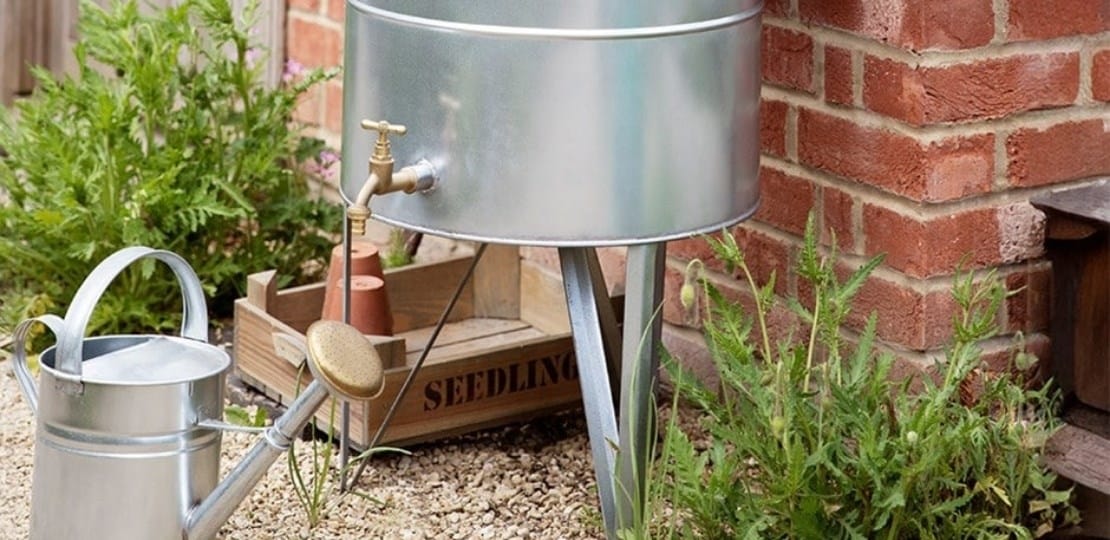
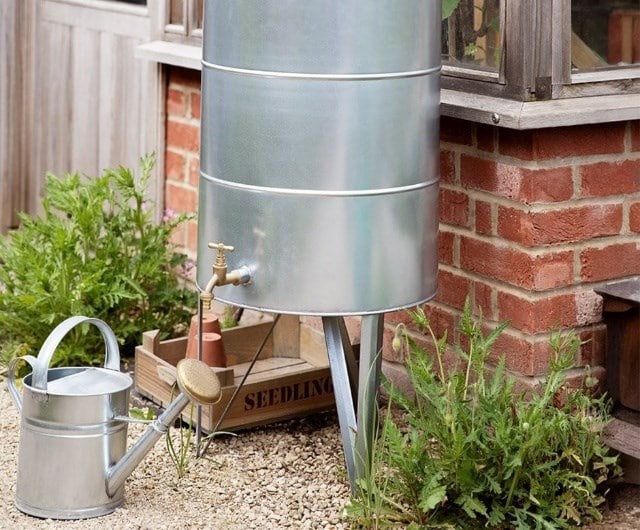
Saving & Harvesting Water & Creating a Rain Garden
Water is a precious resource and the less we use in the garden the better. 2025 was one of the driest springs in recorded history and we can expect these conditions to become more common in the future.
The UK also has some of the wettest winters and if we can capture rain water, it can lessen our dependence on tap water. Rainwater has many benefits for our plants including essential nutrients, a slightly higher pH, and is free from chlorine and other chemicals found in tap water.
As our climate becomes more unpredictable it’s important to do what we can to lessen our impact on the environment and garden in a more sustainable way.
Consider attaching a water butt to your down pipe of your house, shed or greenhouse which will store rainwater ready for dry spells in the garden.
You could also create a rain garden by using plants that don’t mind being temporarily waterlogged. Rain gardens help to slow the flow of rain water from hard surfaces and drainpipes, capturing and filtering water slowly through soil.
When planning your rain garden site make sure it is at least 5m away from your house. If you do need it placed closer then seek advice from a professional surveyor and make sure to avoid damage to your foundations.
The site should drain to a minimum rate of 1.25cm per hour. Less than this suggests clay soil which is not suitable for a rain garden, but could be for a pond or bog garden. The rain garden will ideally be 20% of your roof size, but even a small rain garden will make a difference.
Plants that would be suitable include:
Yellow Flag iris (Iris psuedacorus) Purple loosestrife (Lythrum salicaria), Bistort (Persicaria bistorta), Coneflower (Echinacea pupurea), Meadowsweet (Filipendula ulmaria), Primrose (Primula vulgaris), Penstemon (Penstemon digitalis), Granny's Bonnet (Aquilegia vulgaris) Soft Rush (Juncus effusus) Arum Lily (Zantedeschia aethiopica), Dogwood (Cornus sanguinea), Hydrangea ‘Annabelle’ (Hydrangea arborescens)
Rain gardens provide great habitat for amphibians and insects like dragonflies. Not only will you be benefitting the wider ecosystem, but you’ll add interest to your garden.
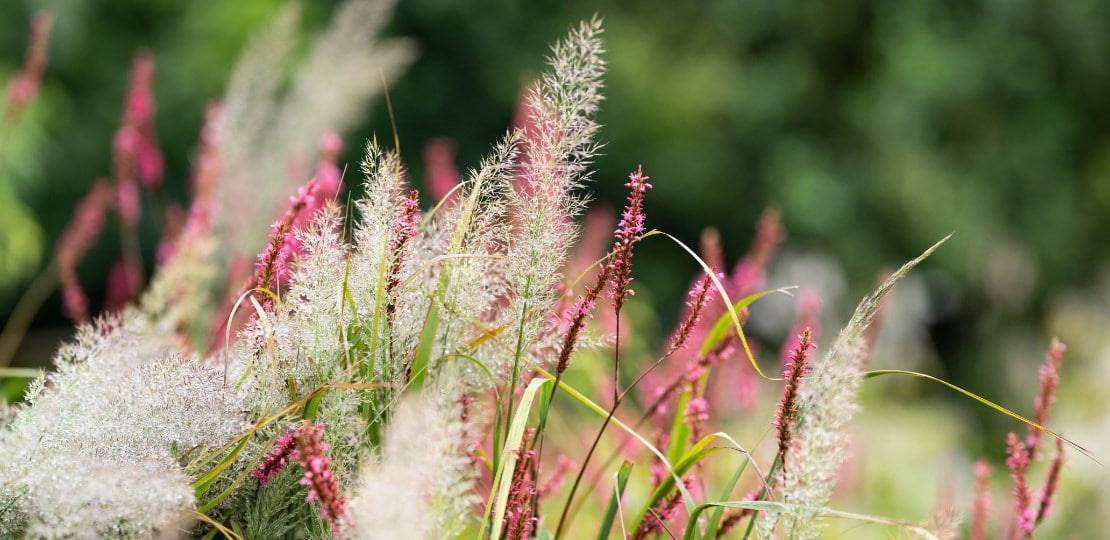
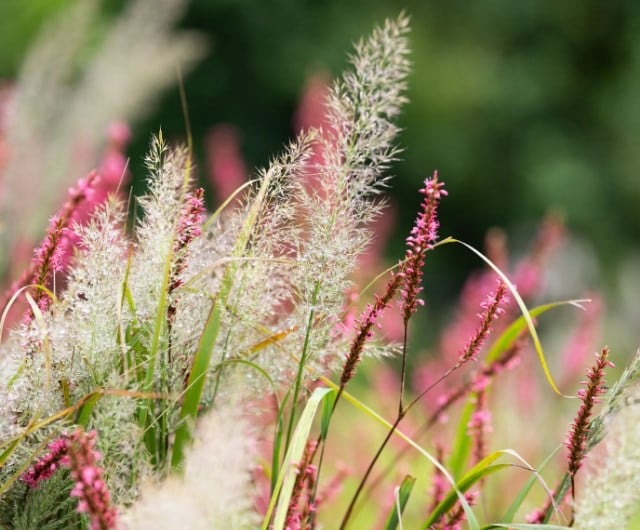
Filling summer gaps
Summer is a time when your border will be bursting with colour and texture. It’s also a great time to see where you have gaps. Over the years perennials may die off due to environmental or insect & disease damage. If you are digging and dividing perennials in spring, you may also find you need to fill gaps whilst you wait for plants to establish.
Late flowering grasses are fantastic for adding interest and height to a border. Miscanthus, Panicum, Stipa, Calamagrostis and Pennisetum cultivars are all great choices. They all have colourful flower heads and provide interest well into autumn. In the winter I tend to leave these grasses standing and cut back in early spring. The foliage will turn rich golden brown hues and is a good habitat for hibernating insects.
Chasmanthium, Hackonechloa are good choices for dappled shade and have beautiful movement that works well when underplanting trees and shrubs.
For late flowering plants, japanese anemones are a classic choice. They come in pure white through to deep pink with dainty single flowers (great for pollinators) or flouncy doubles. They do well in semi-shade and provide a good amount of height to the back of a border. You could also use them underneath established trees. They don’t like their roots disturbed and take a little while to settle in, but are reliable and easy to look after once they do. Mulch once a year to keep them looking their best.
Dahlias will flower all the way up to the frosts if you keep cutting the dead heads and are a colourful addition to the border. They don’t like too much competition from other plants and want a very sunny open site, so give them plenty of space and they will fill it. Plant them out after the risk of frost has passed and feed with a good organic compost.
Asters should be included in every border. They are great as a late summer staple and provide a source of food for pollinators. Many are drought tolerant and don’t mind some shade. Mixing them with grasses gives a contemporary look and they come in a colour to suit every theme.



